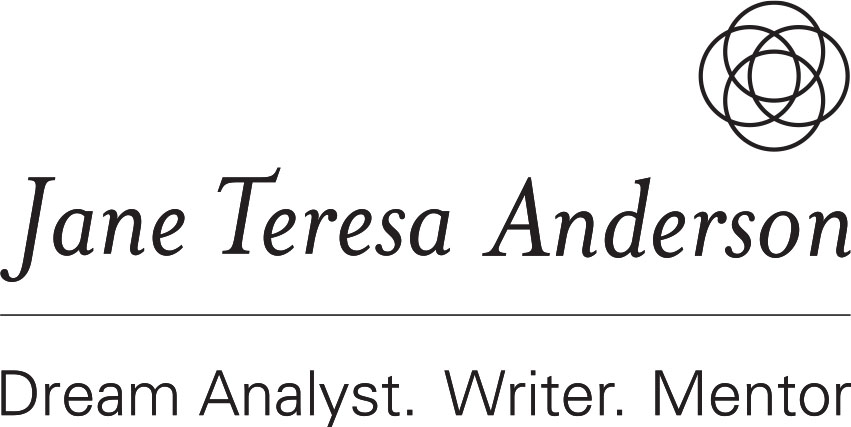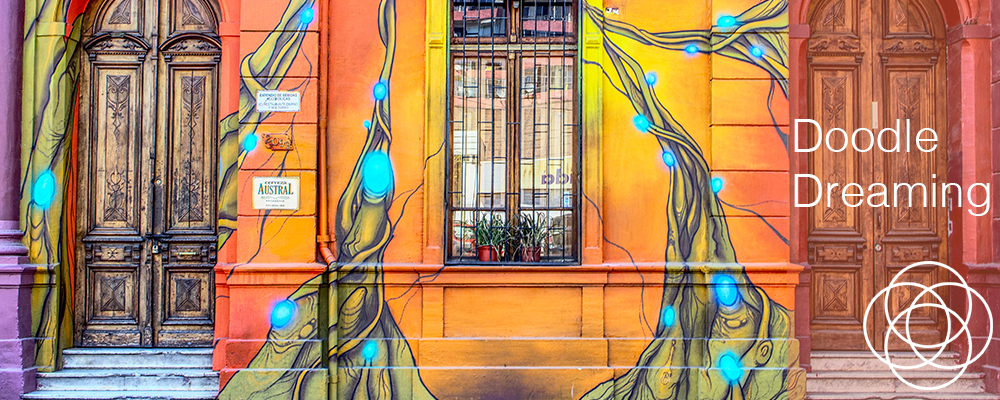There’s a land somewhere between dreaming and waking that I call Doodle Dreaming. It’s rare that I find myself there, but when I do, it’s mesmerising, and I linger as long as I choose.
The gate to Doodle Dreaming, for me, is found at the end of a long and luxurious dreaming night. I wake up but don’t open my eyes. I’m not awake enough to want to get out of bed, but I am awake enough to know that I am fully conscious, my dreams of the night wrapped up behind me.
The gate can’t be opened. I can’t will it to open, or perhaps I just haven’t discovered how to do it yet. But sometimes, just sometimes, the gate opens and I’m Doodle Dreaming. I might find myself examining the bark of a tree up very close, exploring its nooks and crannies, falling into the array of colours that meld together to appear as brown tree trunk. I might find myself floating up in the tree canopy, tracing the veins in a single leaf, aware of a spring blossomed breeze brushing my cheek.
I might encounter animals, objects, people, bizarre symbols, usually in fabulous detail but sometimes in light outline as if I’ve just begun to doodle draw them into being.
In Doodle Dreaming I can either observe or participate, but I have the overall feeling that I’m co-creating this land: wherever I look opens up in greater detail. It’s a sense of being fully and mindfully present with a greater degree of access than I might normally experience when going about my days.
Occasionally, while Doodle Dreaming, I remember a dream, or see a symbol or part of a scene from a dream that allows me to quietly recall a dream that might otherwise have been lost to me, or to dialogue with a dream symbol to see what it reveals about itself.
Now, you might draw the conclusion that I am lucid dreaming, but I’m not.
In lucid dreaming you are simultaneously aware of being awake and of dreaming, but in Doodle Dreaming I am not fully dreaming. I’m, well, I’m doodling! I’m more awake than dreaming, and I’m not immersed in an on-going dream drama. More than this, when I lucid dream it is an entirely different kind of experience, so I know that this Doodle Dreaming is something different.
I’ll tell you what else it is not. It’s perhaps easier to tell you what it’s not than to tell you what it is.
It’s not daydreaming. Daydreaming, for me, is more of a what-if exercise that occasionally runs off on its own steam leading to surprising places. Daydreaming is imagining, trying out, escaping, wishing, playing, and creating. If you really wanted to, you could analyse your daydreaming and come up with helpful insights into your mindset makeup, but those insights won’t be anywhere near as deep and accurate as analysing your night dreams would yield. Doodle Dreaming doesn’t have a sense of what-if or trying out. It has more of a sense of exploring what is, while somehow co-creating it.
Doodle Dreaming is not hypnopompic or hypnagogic hallucinating.
Hypnagogic hallucinations are the images you sometimes see when you are drifting off to sleep. They tend to be still images, like photographs. While not true dreaming, hypnagogic images arise from the unconscious and can be informative. They are the result of the brain transitioning between wakefulness and sleep. I experience them as a slide show, intriguing, sometimes quite fast, and I know, while it’s happening, that I have only moments of wakeful consciousness to watch the show before I fall asleep. Sometimes I catch the moment of falling, the moment when I can no longer name the images as they disintegrate before me and I lose touch with consciousness.
Doodle Dreaming is not hypnagogic sleep. In Doodle Dreaming the images are video, not stills, and I can linger there as long as I wish. There’s no losing the place, no falling asleep.
Hypnopompic hallucinations are the images or partial dreams you may experience if you wake up suddenly and open your eyes while a dream is still running. Because your eyes are open, your brain decides that the images and movies it’s experiencing (the dream) are happening in the room in front of your eyes. It’s an executive decision made by your brain. These hallucinations are often quite emotional, and commonly terrifying, because it was the emotional or terrifying content of your dream that scared you into waking up prematurely, or into opening your eyes too soon. This is what’s happening when you see ghosts or evil spirits or strangers hovering over your bed. They’re not there. They’re projected dream content.
Doodle dreaming is not hypnopompic sleep. In Doodle Dreaming your eyes are closed and there’s no terrifying content. It’s gentle, frequently awe-inspiring, amazing, and lasts as long as you wish. It doesn’t dissolve within a few seconds. You are fully awake and alert, not in a fuzz-filled foggy world of ghosts floating above you.
So what is Doodle Dreaming? I think it’s a heightened sense of mindful awareness enjoyed in the twilight zone between dreaming and jumping into the day, and perhaps, just perhaps, a place to creatively doodle or maybe even just dawdle, and gather your resources to emerge more peacefully and at one with a new day.
Have you had this experience? What do you make of it? How does it help you?
You might also enjoy


5 comments on “Doodle dreaming”